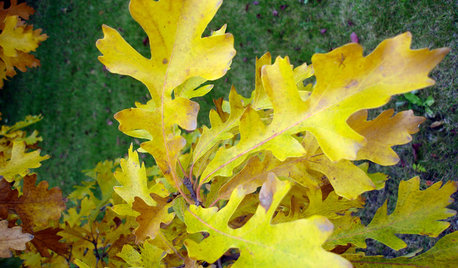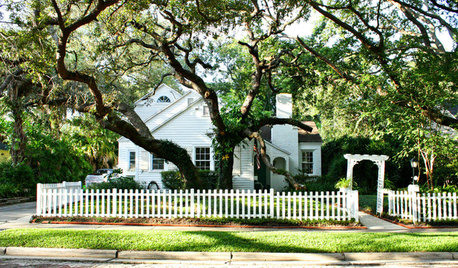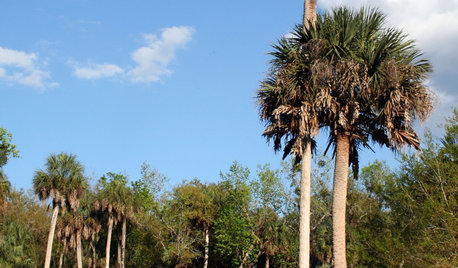Oak tree with biggest Acorns for Georgia?
girlgroupgirl
14 years ago
Related Stories

GARDENING GUIDESCelebrate Eastern Oaks for Wildlife, Longevity and Seasonal Interest
There might not be a more important tree to have in your eastern U.S. landscape — if you can fit one in
Full Story
TREESGreat Design Plant: Southern Live Oak Offers an Unbeatable Canopy
Keep it dense or prune it for more light. No matter how you grow Quercus virginiana, it’s a majestic addition to its native landscape
Full Story
FALL GARDENING6 Trees You'll Fall For
Don’t put down that spade! Autumn is the perfect time for planting these trees
Full Story
TREESGreat Design Plant: Sabal Palm Enchants in Balmy Sites
Towering and tolerant, this tree blends in, stands out and happily stars in vacation photos
Full Story
GARDENING GUIDESGarden Myths to Debunk as You Dig This Fall and Rest Over Winter
Termites hate wood mulch, don’t amend soil for trees, avoid gravel in planters — and more nuggets of garden wisdom
Full Story
TRIMShutter Cutouts: A Window to One's Soul?
To settle on the perfect shape for this simple detail, follow your heart — or diamond, or maple leaf
Full Story
GARDENING GUIDES10 Top Native Plants for the U.S. Southeast
For a low-maintenance and wildlife-friendly landscape, use Southern natives that withstand heat and humidity
Full Story
VACATION HOMESHouzz Tour: Moss-Covered Lakeside Cottage Now a Modern Marvel
A 1949 Michigan weekend cottage with a sunken roof gets a makeover that stays true to the house's humble roots
Full Story
GARDENING GUIDESNew Ways to Think About All That Mulch in the Garden
Before you go making a mountain out of a mulch hill, learn the facts about what your plants and soil really want
Full Story
FALL GARDENING7 Reasons Not to Clean Up Your Fall Garden
Before you pluck and rake, consider wildlife, the health of your plants and your own right to relax
Full Story





Iris GW
laylaa
Related Professionals
La Marque Landscape Architects & Landscape Designers · Frisco Landscape Contractors · Aloha Landscape Contractors · Lake Worth Landscape Contractors · Maplewood Landscape Contractors · Berkeley Fence Contractors · Long Beach Fence Contractors · Marana Fence Contractors · Ramona Fence Contractors · Tavares Fence Contractors · Woodinville Fence Contractors · Saratoga Springs Fence Contractors · Mableton Window Contractors · Naples Window Contractors · San Juan Capistrano Window ContractorsgirlgroupgirlOriginal Author
cyrus_gardner
Iris GW
laylaa
girlgroupgirlOriginal Author
laylaa
girlgroupgirlOriginal Author
laylaa
cyrus_gardner
nippersdad
girlgroupgirlOriginal Author
groundcover
scotland1
girlgroupgirlOriginal Author
scotland1
UFDionysus_aol_com
bagsmom
girlgroupgirlOriginal Author
poaky1